Claire Milbrath’s paintings exude naivety and charm
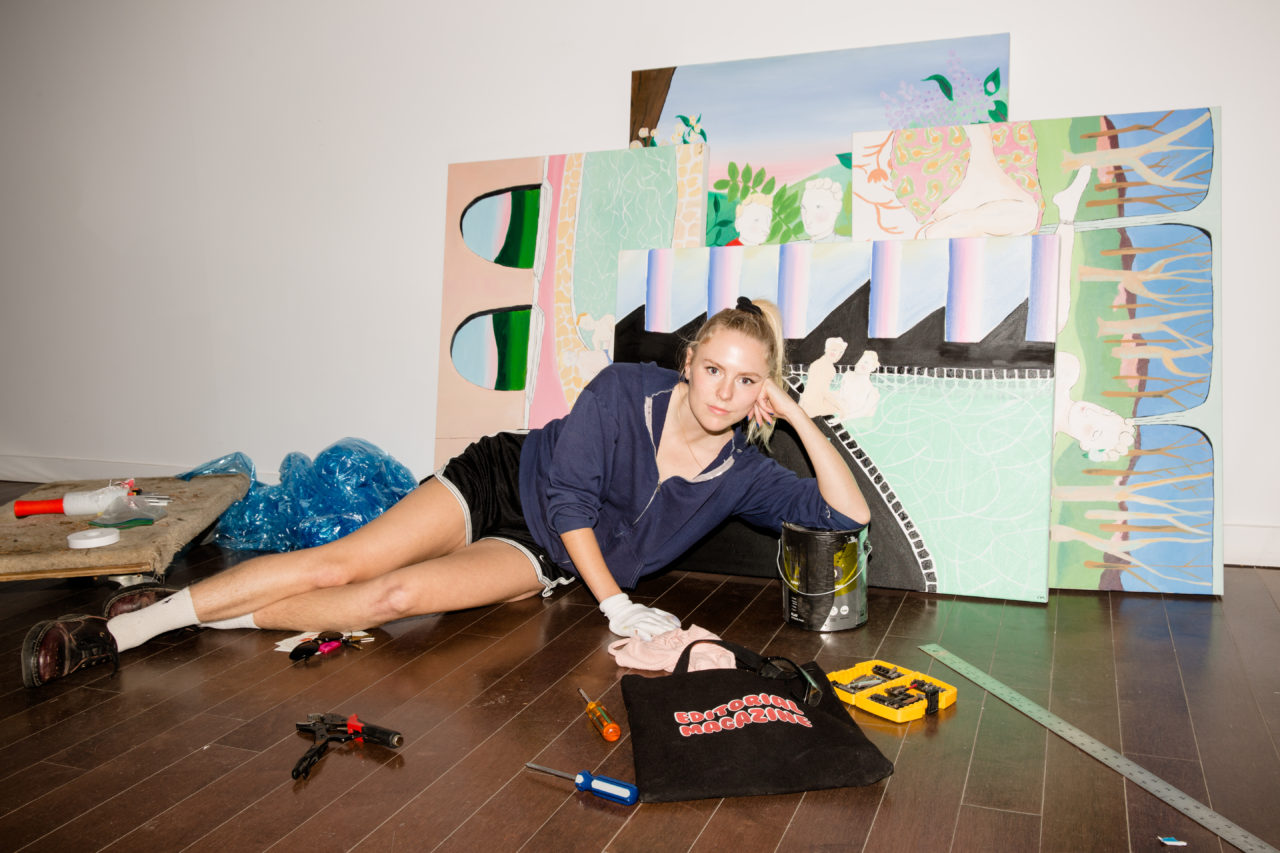
Claire Milbrath is no stranger to the Montreal arts community— as Editor-In-Chief of Editorial Magazine, she has helped carve out a niche that has its finger very much on the pulse of an integral part of our city’s subculture. The visual direction used in Editorial is perhaps a logical extension of Claire’s own artistic prose as a painter. We had a chat with her about her process and the ideas behind crafting the persona of the fictional character ‘Gray’, her “passively promiscuous” subject.
Firstly, can you please tell us a little bit about your process as a painter ?
I like looking at classical paintings for inspiration. I love Maurice Denis, Caravaggio. I collect imagery that inspires a mood and a scene. Before starting a painting I’ll put together maybe 10-12 images, paintings, color samples, and screenshots from movies, usually melodramas. Once I start the actual painting I can’t look at anything because it throws me off. My perspective is already so warped I don’t need someone else’s in there. I pick out music that matches the mood, usually sweeping romantic scores like John Barry, but not always. When I painted “Evening Dream” I listened to David Bowie’s “Heroes” on repeat for the first four days.
Can you tell us a bit about the worlds and situations you portray your subjects in and the humour embedded in the paintings ?
Poor Gray’s world is limited to what I can paint, hence no cars, no women, until I learn how. If it’s an existential joke, I am playing God. Gray never takes action. He is usually totally still, don’t expect him to come leaping off the canvas. His sexual adventures is all he has really. He’s trapped, but I don’t think he would leave if he could.
Are there much use of symbols in your work ? Are there hidden meanings in some of the content ?
I don’t want to ascribe specific meanings to each thing, as I want them to be open for interpretation. But yes I love hidden messages. I like referencing specific elements of paintings from the canon of art history, it feels bad in a good way.
Tell us a little bit about Gray: Who is he ? Why does he exist ? Why do you choose to portray him in the way you do ? Is he recently converted gay ?
Poor Gray is an aimless, anxious man. He was born gay, it’s a part of his personality. He wasn’t always sexually active however. Until I began to explore my own sexuality, and found that my interactions with men were honestly naive. I started inserting Gray into hyper sexualized scenes as an attempt to regain control of my own sexual identity, while hoping to shed the gender norms that I felt bound by working in the fashion industry.
People are very curious about Poor Gray’s gender and sexuality, when gender has been something I’ve hoped to purposefully ignore in my work. I don’t want to be another woman artist making work about my femininity. Gray is androgynous, just like Caravaggio’s Lute Player which was considered a portrait of a woman for centuries.
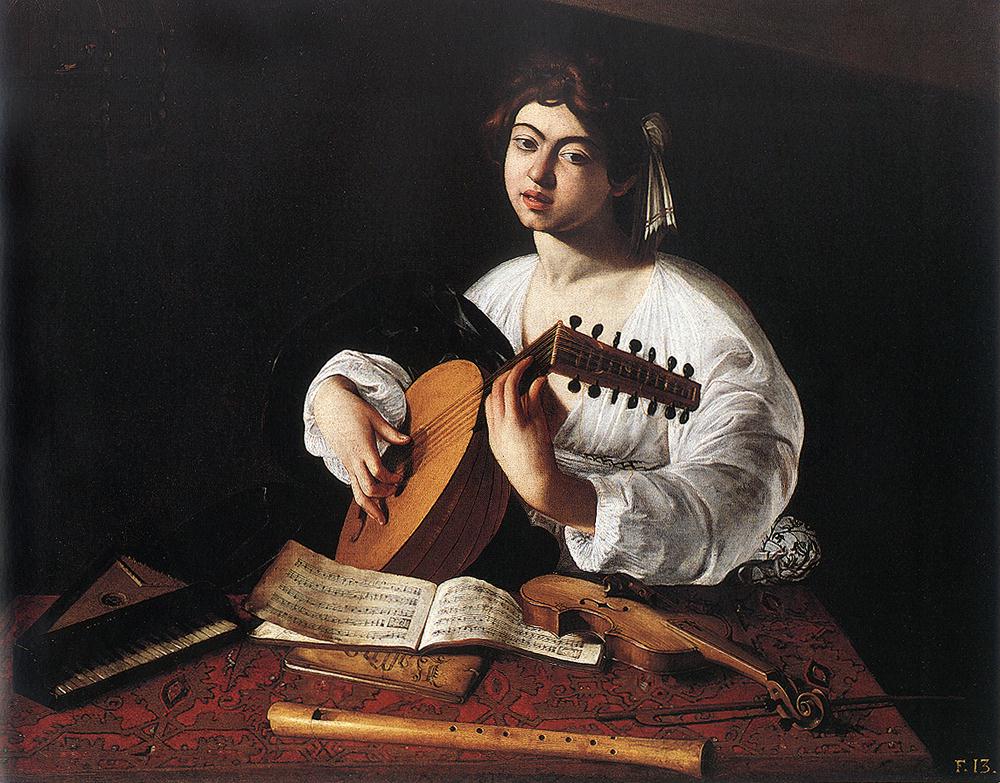
Caravaggio, Lute Player, c. 1596
We spoke briefly about Gray perhaps being a projection of yourself— Claire Milbrath in an alternate-lived experience. Can you touch upon this a bit ?
In many ways Gray is a self-portrait. I channel my anxiety, idleness, agoraphobia, and sexuality through him. I don’t know why, or if it’s helpful.
The name we gave your group show is pretty bluntly titled ‘We Live In A Fantasy’— looking at your paintings is very cathartic: as if you have captured the essence of a ‘daydream’. How much does fantasy play into it ?
I guess the world I’ve created is a fantasy. In my fantasy Gray (me) is resting, day dreaming. In Gray’s fantasy he’s visiting extravagant pools and villas, having romantic sexual encounters.
What is it about the male homosexual experience that interests you ? And why, despite the overt eroticism in some of your paintings, do you choose to portray and imbue your subjects with such purity and innocence ?
This question is hard to answer but important to ask. Gray’s encounters are more about removing the sexualized female body from the equation, to create an idyllic, genderless scene for myself to explore. I often think about slash fiction (male/male fan fiction). Most of the authors behind the Kirk/Spock porn were women. It’s not necessarily about a homoerotic fantasy, it’s about emphasis on character, adding feminine traits (innocence, softness) to a masculine sexual experience. I relate to the slash fiction authors and their desire to see a sexual relationship between equals free from hierarchical gender roles.
What else have you got in store for the future ?
My next solo show opens this November at Steve Turner Contemporary in LA. It’s inspired by Aldous Huxley’s first novel, “Crome Yellow” a satire about the futility of the upperclass. I’m really excited about the work, I can’t wait.
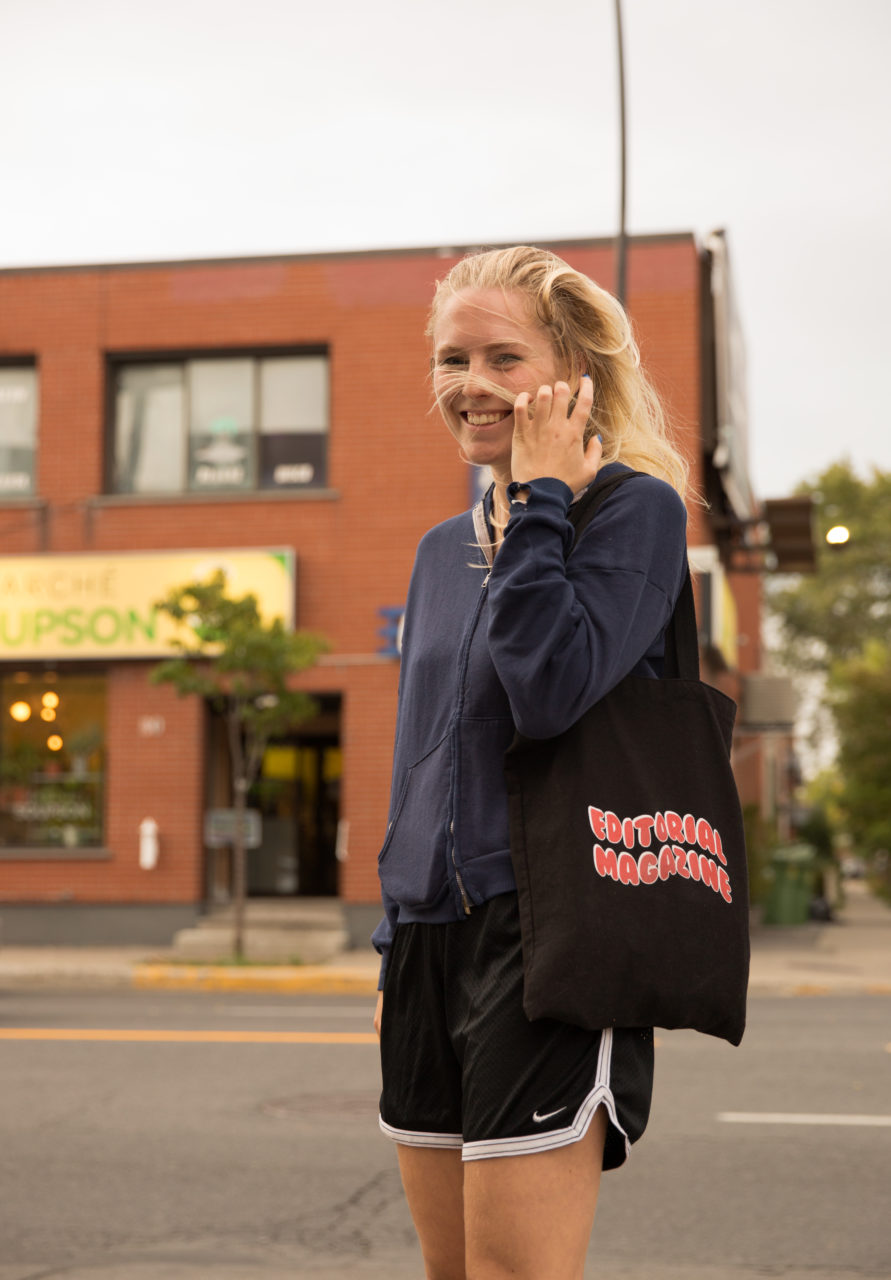

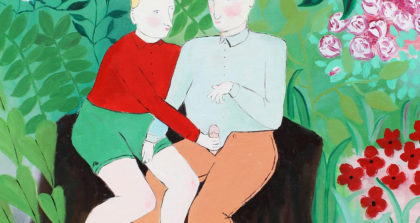
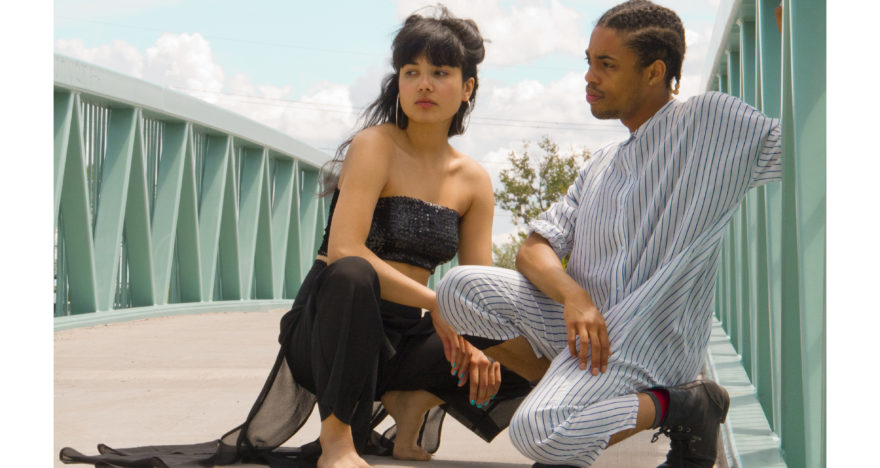
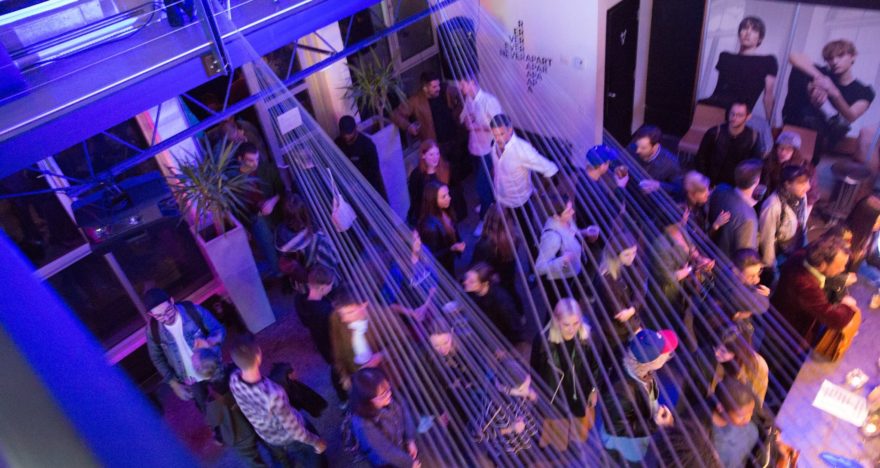
View Comments
No Comments (Hide)